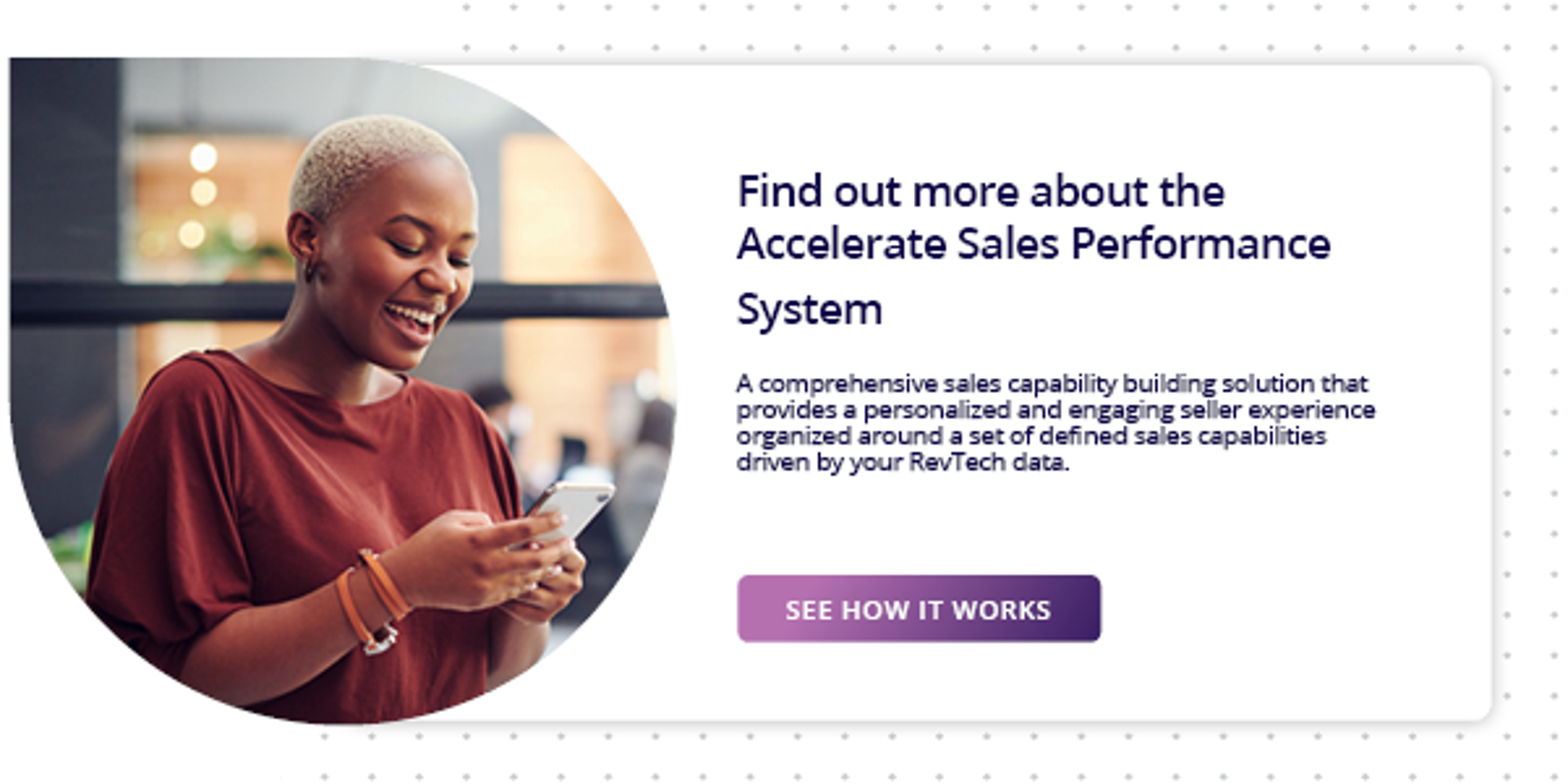A Beginners Guide to a Data Driven Sales Strategy
Sales enablement

Both recent technological advancements and the availability of information have led to a drastic change in sales.
It’s no longer good enough to make strategic decisions based on educated guesses and gut feelings. Instead, sales leaders must rely on data and analytics to guide their selling strategy.
For those who aren’t familiar, a data-driven sales strategy is exactly what it sounds like—the process of using data to inform every one of your sales decisions. Although it’s an easy concept to understand, it’s significantly more difficult to put into practice.
Consider this: 40% of organizations indicate that scattered information and limited visibility into data impair their sales organization. Even more concerning, 56% of sales executives are dissatisfied with their ability to offer valuable, data-driven insights (source).
If you’re among the group of sales leaders who’d like to implement a data-driven sales strategy, but just don’t know where to start, keep reading! Today’s blog post gives you the five key steps to developing a data-driven sales strategy.
1. Secure company buy-in and adoption.
A data-driven sales strategy starts from the top down. If your executives aren’t able to understand or communicate the importance of using data to drive decision-making, it will never become a priority.
As with any other sales strategy, you must be able to prove that it works before your leadership team will get behind it. So, we recommend starting with the data you already have access to. Look at your CRM, your sales enablement tools, and your marketing automation platforms. Gather important insights and draw educated conclusions about the impact this data has on your sales process. Then, present your findings to your leadership team in terms of revenue and closed deals.
Here’s an example using a company that sells HR software: A sales manager takes a look at his CRM and exports all available data for the 500 customers who’ve spent the most money at his company in the last five years. After careful analysis, he finds that these 500 customers have the following data points in common:
- Company size,
- The initial contact’s job title,
- And the buyer’s job title.
Here’s what he now knows: For large companies that are most likely to spend a lot of money, the decision-maker is never the first point of contact. Instead, an entry- or mid-level HR employee reaches out first and only involves their manager later on in the process.
When it’s time to present his findings, this sales manager explains that the sales team is only prospecting potential buyers who have higher-level job titles – yet, as the data shows, reps who prospect more junior employees end up closing more deals. The key takeaway here is this: Reps at this company would close more deals if they rethink their prospecting methods and take this new insight into account.
2. Prioritize data quality and availability.
Your data-driven sales strategy will only be as good as the data you have access to. Good data leads to less time spent prospecting, more meetings on the calendar, and ultimately more closed deals. The impact of bad data, however, can range from a minor inconvenience to devastating revenue loss. Consider these statistics:
- Inaccurate data wastes 27.3% of sales reps’ time. That’s 546 hours a year per full-time sales rep (source).
- Fortune 1000 enterprises lose more money in operational inefficiency due to data quality issues than they spend on data warehouse and customer relationship management (CRM) initiatives (source).
- Bad data costs U.S. businesses more than $611 billion each year (source).
For your data-driven sales strategy to work, you must make sure your team has access to high-quality, clean data. Here are a few steps you can take to ensure they do:
- Audit your customer and contact database.
- Improve your data collection methods.
- Invest in an automated data maintenance solution.
3. Develop a technology stack that supports your initiatives.
Your sales team likely has access to several tools and platforms that they consistently use to do their job. But, if these platforms don’t share data or integrate in some way, valuable information will be lost or left in different silos. Because of this, it’s important to develop a sales technology stack that supports your data-driven sales initiatives.
Here’s what we recommend:
- Audit the existing tools and technologies your team is currently using. Determine which are necessary, which could be replaced, and which can go completely.
- Prioritize ease-of-use and integration. What we mean is this: The newest, most complicated tools aren’t always the best for your team. Choose platforms your team is likely to use.
- Conduct interviews with key stakeholders before purchasing new technology. Gather your best reps and ask for feedback—after all, they’re the ones who’ll be using it. They’ll know what will work and what won’t.
4. Apply data to your sales decision-making.
Consider standard sales metrics like average deal size, pipeline velocity, lead response time, and quota attainment. Also, consider less common data like the performance of sales enablement content or days of the week when prospects are most likely to answer their phones.
Every aspect of your sales strategy can be improved with data—from onboarding to lead scoring. If you’re not sure where to start, here are a few ideas:
- Onboarding: Collect data about sales rep training— particularly focusing on top-performing reps—and identify commonalities between the onboarding programs that lead to successful reps. Then, use this data to tailor future onboarding programs.
- Sales productivity: Analyze data regarding how your reps spend their time. Are they spending too much time on administrative work? Emails? Data entry? Use this information to guide your tech purchases and prioritize tools that minimize more menial tasks.
- Deal analysis: Conduct a win/loss analysis to understand why some prospects buy your products and why some don’t. Use this data to tailor your sales outreach.
5. Offer continued training and coaching.
As technology and sales continue to evolve, you and your team will require additional training. This is a vital component of a data-driven sales performance improvement strategy. Without the appropriate training, your team and your strategy will inevitably fall behind.
More than 22% of those reporting “low” training and coaching support reported a decline in sales revenue of more than 20% (source).
Key Takeaways
With so much information and data readily available, it’s never been easier to make the switch to a data-driven sales approach. Once you have executive buy-in and prioritize data hygiene, you’ll have a much easier time increasing sales productivity, finding sales content that converts, and even setting more realistic goals for your reps. What are you waiting for?
This is a guest post from Molly Clarke is a Senior Marketing Manager at Zoominfo, a leading B2B data provider, where she writes for ZoomInfo's B2B blog on topics related to sales, marketing, and recruiting.

White Paper: From Insight to Impact - Harnessing Behavior Analytics for Sales Growth
Learn how to harness behavior analytics for sales growth by overcoming the challenge of connecting sales performance metrics to specific behaviors.
DownloadGet industry insights and stay up to date, subscribe to our newsletter.
Joining our community gives you access to weekly thought leadership to help guide your planning for a training initiative, inform your sales strategy, and most importantly, improve your team's performance.







